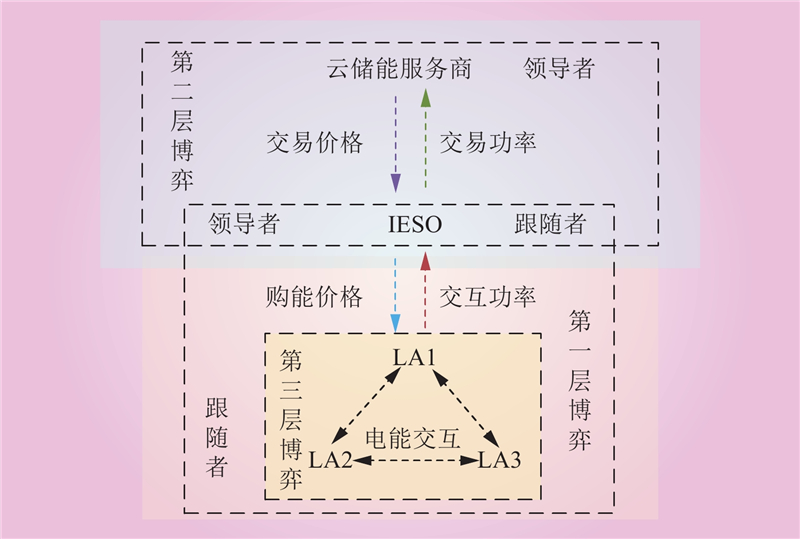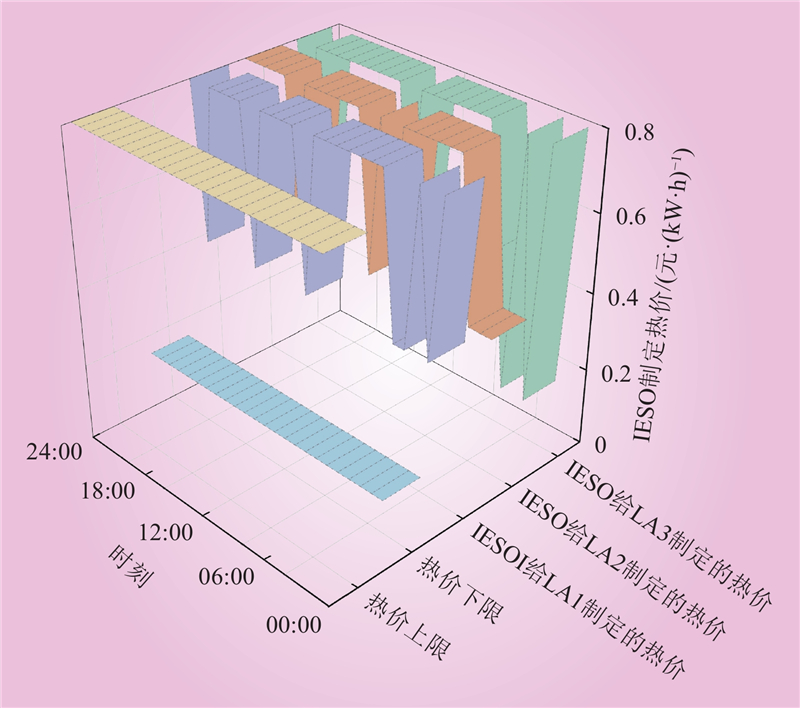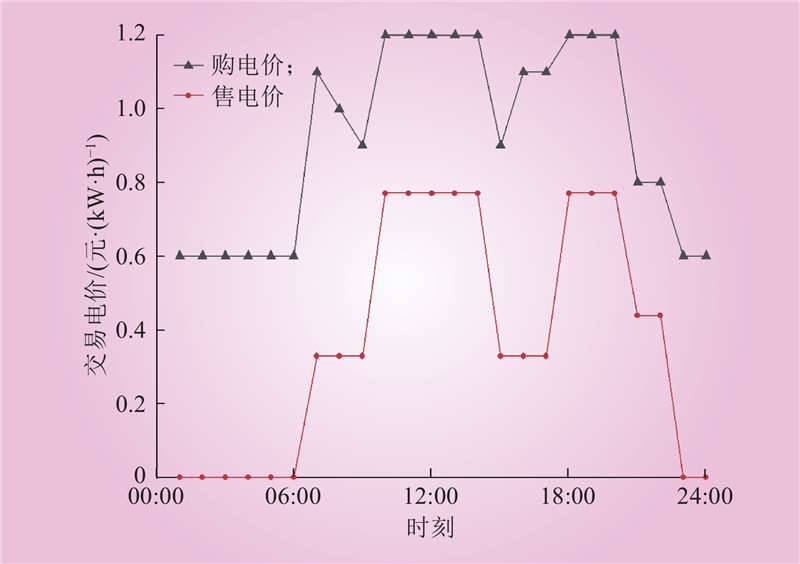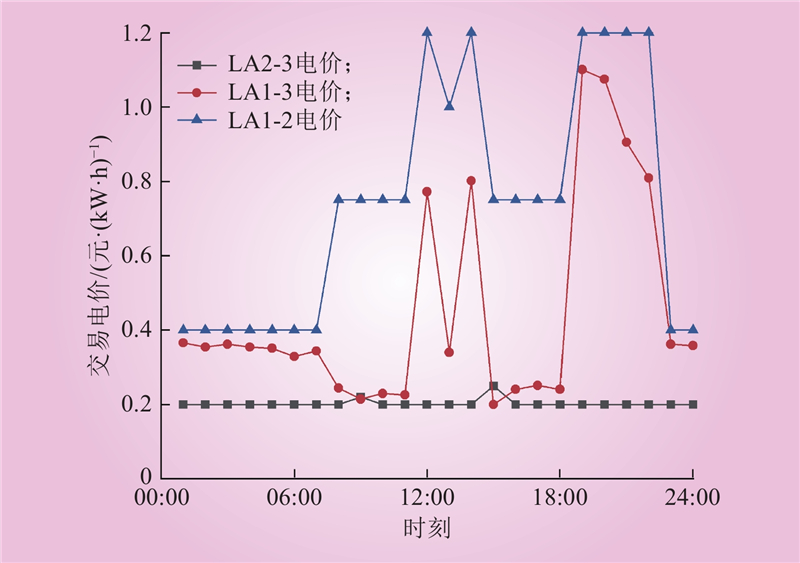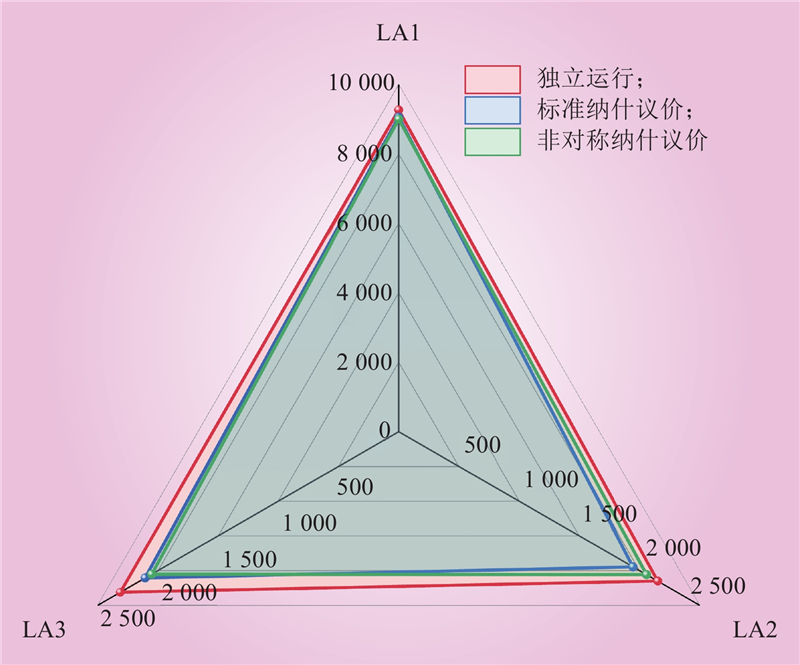| 1 |
冀肖彤, 杨东俊, 方仍存, 等. “双碳” 目标下未来配电网构建思考与展望[J]. 电力建设, 2024, 45 (2): 37- 48.
DOI
|
|
JI Xiaotong, YANG Dongjun, FANG Rengcun, et al. Research and prospect of future distribution network construction under dual carbon target[J]. Electric Power Construction, 2024, 45 (2): 37- 48.
DOI
|
| 2 |
束娜, 江山, 刘春伶, 等. 计及灵活性资源多时间尺度协调互济的电-气-热综合能源系统优化调度[J]. 电力建设, 2024, 45 (12): 3- 15.
|
|
SHU Na, JIANG Shan, LIU Chunling, et al. Optimal scheduling of electricity-gas-heat integrated energy system with flexible resources in multiple time scales[J]. Electric Power Construction, 2024, 45 (12): 3- 15.
|
| 3 |
傅成程, 张春雁, 刘键烨, 等. 负荷聚合商参与需求侧资源聚合优化调控研究[J/OL]. 中国电力, 1–12[2024-11-20]. http://kns.cnki.net/kcms/detail/11.3265.TM.20240924.1124.002.html.
|
|
FU Chengcheng, ZHANG Chunyan, LIU Jianye, et al. Research on load aggregators' participation in DSRs optimization and regulation[J/OL]. Electric Power, 1–12[2024-11-20]. http://kns.cnki.net/kcms/detail/11.3265.TM.20240924.1124.002.html.
|
| 4 |
任洪波, 王楠, 吴琼, 等. 考虑阶梯型碳交易的多负荷聚合商协同优化调度与成本分配[J]. 电力建设, 2024, 45 (2): 171- 182.
|
|
REN Hongbo, WANG Nan, WU Qiong, et al. Collaborative optimal scheduling and cost allocation of multiload aggregator considering ladder-type carbon trading[J]. Electric Power Construction, 2024, 45 (2): 171- 182.
|
| 5 |
YUE T Y, WANG H L, LI C J, et al. Optimization strategies for green power and certificate trading in China considering seasonality: an evolutionary game-based system dynamics[J]. Energy, 2024, 311, 133355.
DOI
|
| 6 |
王秀慧, 赵浩辰, 谭忠富. 计及负荷聚合商的综合能源系统双层主从博弈运行优化[J]. 可再生能源, 2023, 41 (11): 1554- 1562.
DOI
|
|
WANG Xiuhui, ZHAO Haochen, TAN Zhongfu. Optimization study of integrated energy system hierarchical Stackelberg game operation with load aggregator[J]. Renewable Energy Resources, 2023, 41 (11): 1554- 1562.
DOI
|
| 7 |
田福银, 马骏, 王灿, 等. 基于双层主从博弈的综合能源系统多主体低碳经济运行策略[J]. 中国电力, 2022, 55 (11): 184- 193.
|
|
TIAN Fuyin, MA Jun, WANG Can, et al. Multi-agent low-carbon and economy operation strategy of integrated energy system based on bi-level master-slave game[J]. Electric Power, 2022, 55 (11): 184- 193.
|
| 8 |
张婕, 花宇飞, 王晨. 基于合作博弈的需求侧调节响应能力共享模型[J]. 中国电力, 2025, 58 (6): 45- 55.
|
|
ZHANG Jie, HUA Yufei, WANG Chen. A demand side adjustment capacity sharing model based on cooperative game[J]. Electric Power, 2025, 58 (6): 45- 55.
|
| 9 |
张俊成, 黎敏, 刘志文, 等. 基于改进交替方向乘子法的配电网柔性负荷分层集群调控方法[J]. 中国电力, 2024, 57 (1): 140- 147.
|
|
ZHANG Juncheng, LI Min, LIU Zhiwen, et al. Hierarchical cluster control method for flexible load in distribution network based on improved alternating direction multiplier method[J]. Electric Power, 2024, 57 (1): 140- 147.
|
| 10 |
刘也, 李超, 赵剑锋, 等. 基于合作博弈的多微网电热能量交易策略[J]. 自动化技术与应用, 2024, 43 (9): 135- 140.
|
|
LIU Ye, LI Chao, ZHAO Jianfeng, et al. Multi microgrid electric heating energy trading strategy based on cooperative game theory[J]. Techniques of Automation and Applications, 2024, 43 (9): 135- 140.
|
| 11 |
陈璨, 樊小伟, 张文浩, 等. 促进分布式光伏消纳的两阶段源网荷储互动优化运行策略[J]. 电网技术, 2022, 46 (10): 3786- 3799.
|
|
CHEN Can, FAN Xiaowei, ZHANG Wenhao, et al. Two-staged generation-grid-load-energy storage interactive optimization operation strategy for promotion of distributed photovoltaic consumption[J]. Power System Technology, 2022, 46 (10): 3786- 3799.
|
| 12 |
崔杨, 安宁, 付小标, 等. 考虑广义储能与碳捕集设备联合调峰的电力系统低碳经济调度[J]. 电力自动化设备, 2023, 43 (8): 40- 48.
|
|
CUI Yang, AN Ning, FU Xiaobiao, et al. Low-carbon economic dispatching of power system considering joint peak shaving of generalized energy storage and carbon capture equipment[J]. Electric Power Automation Equipment, 2023, 43 (8): 40- 48.
|
| 13 |
康重庆, 刘静琨, 张宁. 未来电力系统储能的新形态: 云储能[J]. 电力系统自动化, 2017, 41 (21): 2- 8, 16.
DOI
|
|
KANG Chongqing, LIU Jingkun, ZHANG Ning. A new form of energy storage in future power system: cloud energy storage[J]. Automation of Electric Power Systems, 2017, 41 (21): 2- 8, 16.
DOI
|
| 14 |
粟世玮, 王相, 李咸善, 等. 冷热电联供型区域综合能源系统电-热-冷云储能优化配置[J]. 南方电网技术, 2025, 19 (3): 24- 38.
|
|
SU Shiwei, WANG Xiang, LI Xianshan, et al. Optimal configuration of electricity-thermal-cold cloud energy storage in the regional integrated energy system with CCHP[J]. Southern Power System Technology, 2025, 19 (3): 24- 38.
|
| 15 |
陈页, 郭亦宗, 郭创新, 等. 计及需求响应的微电网云储能配置模型[J]. 电气自动化, 2022, 44 (2): 25- 28.
DOI
|
|
CHEN Ye, GUO Yizong, GUO Chuangxin, et al. Microgrid cloud energy storage configuration model considering demand response[J]. Electrical Automation, 2022, 44 (2): 25- 28.
DOI
|
| 16 |
王辉, 吴作辉, 李欣, 等. 含租赁共享储能的多微网与配电网的双层能量交易策略[J]. 电测与仪表, 2025, 62 (6): 24- 34.
|
|
WANG Hui, WU Zuohui, LI Xin, et al. Double-layer energy transaction strategy of multi-microgrids and distribution network with leased shared energy storage[J]. Electrical Measurement & Instrumentation, 2025, 62 (6): 24- 34.
|
| 17 |
李咸善, 马凯琳, 程杉. 含多区域综合能源系统的主动配电网双层博弈优化调度策略[J]. 电力系统保护与控制, 2022, 50 (1): 8- 22.
|
|
LI Xianshan, MA Kailin, CHENG Shan. Dispatching strategy of an active distribution network with multiple regional integrated energy systems based on two-level game optimization[J]. Power System Protection and Control, 2022, 50 (1): 8- 22.
|
| 18 |
孙文杰, 武家辉, 张强. 基于双层博弈的配电网与多综合能源微网协调优化[J]. 电力系统保护与控制, 2024, 52 (2): 26- 38.
|
|
SUN Wenjie, WU Jiahui, ZHANG Qiang. Coordinated optimization of a distribution network and multi-integrated energy microgrid based on a double-layer game[J]. Power System Protection and Control, 2024, 52 (2): 26- 38.
|
| 19 |
王云龙, 何山, 艾纯玉, 等. 考虑云储能的综合能源运营商-负荷聚合商联盟混合博弈定价策略[J]. 电网与清洁能源, 2024, 40 (6): 11- 19, 29.
DOI
|
|
WANG Yunlong, HE Shan, AI Chunyu, et al. The hybrid game pricing strategy for integrated energy operator-load aggregator alliance considering cloud energy storage[J]. Power System and Clean Energy, 2024, 40 (6): 11- 19, 29.
DOI
|
| 20 |
陈兴龙, 曹喜民, 陈洁, 等. 绿证-碳交易机制下热电灵活响应的园区综合能源系统优化调度[J]. 中国电力, 2024, 57 (6): 110- 120.
|
|
CHEN Xinglong, CAO Ximin, CHEN Jie, et al. Optimized dispatch of park integrated energy system with thermoelectric flexible response under green certificate-carbon trading mechanism[J]. Electric Power, 2024, 57 (6): 110- 120.
|
| 21 |
牛耕, 季宇, 杨安男, 等. 基于改进碳交易机制的多能微网低碳经济调度[J]. 电力建设, 2023, 44 (10): 107- 116.
DOI
|
|
NIU Geng, JI Yu, YANG Annan, et al. Low-carbon economic dispatch of multi-energy microgrid based on improved carbon trading mechanism[J]. Electric Power Construction, 2023, 44 (10): 107- 116.
DOI
|
| 22 |
LYU Z L, LAI Y F, YI J Q, et al. Low carbon and economic dispatch of the multi-microgrid integrated energy system using CCS-P2G integrated flexible operation method[J]. Energy Sources, Part A: Recovery, Utilization, and Environmental Effects, 2023, 45 (2): 3617- 3638.
DOI
|
| 23 |
沈运帷, 徐凯, 林顺富, 等. 考虑广义储能参与的多园区综合能源系统低碳优化运行策略[J]. 电力自动化设备, 2024, 44 (11): 41- 51.
|
|
SHEN Yunwei, XU Kai, LIN Shunfu, et al. Low-carbon optimal operation strategy of multi-park integrated energy system considering generalized energy storage participation[J]. Electric Power Automation Equipment, 2024, 44 (11): 41- 51.
|
| 24 |
胡亚春, 窦震海, 张志一, 等. 基于分布鲁棒和改进纳什谈判的多微网-共享储能运行优化策略[J]. 电力建设, 2024, 45 (7): 100- 112.
|
|
HU Yachun, DOU Zhenhai, ZHANG Zhiyi, et al. Multi-microgrid and shared energy storage operation optimization strategy based on distributionally robust and improved Nash bargaining[J]. Electric Power Construction, 2024, 45 (7): 100- 112.
|
| 25 |
蒋东荣, 郭艺鑫, 梁珂, 等. 考虑新能源消纳与低碳排放的多电-气互联系统合作博弈[J]. 太阳能学报, 2023, 44 (10): 58- 67.
|
|
JIANG Dongrong, GUO Yixin, LIANG Ke, et al. Cooperative game of multi-power-gas interconnection system considering new energy consumption and low carbon emission[J]. Acta Energiae Solaris Sinica, 2023, 44 (10): 58- 67.
|
| 26 |
陈志永, 胡平, 别朝红, 等. 基于合作博弈的虚拟电厂联盟策略与收益分配机制研究[J]. 智慧电力, 2024, 52 (1): 39- 46, 64.
|
|
CHEN Zhiyong, HU Ping, BIE Zhaohong, et al. Alliance strategy and revenue allocation mechanism for clustered virtual power plants based on cooperative game[J]. Smart Power, 2024, 52 (1): 39- 46, 64.
|
| 27 |
巨亚琦, 谢丽蓉, 卞一帆, 等. 多微电网共享储能优化配置与成本分配方法[J/OL]. 南方电网技术, 1–9[2024-12-24]. http://kns.cnki.net/kcms/detail/44.1643.tk.20241205.1436.010.html.
|
|
JU Yaqi, XIE Lirong, BIAN Yifan, et al. Optimal allocation and cost allocation method of shared energy storage for multi-microgrids[J/OL]. Southern Power Grid Technology, 1–9[2024-12-24]. http://kns.cnki.net/kcms/detail/44.1643.tk.20241205.1436.010.html.
|



